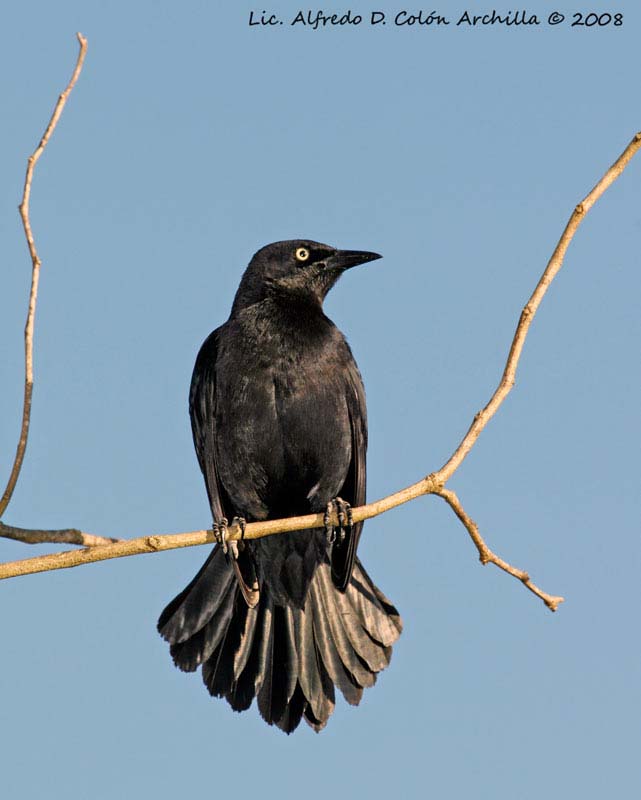
Greater Antillean Grackle
Quiscalus niger
Passeriforme Order – Icteridae Family
BIOMETRICS :
L : 24- 27 cm
DESCRIPTION:
Frequent in parks and beaches, the Greater Antillean Grackle is a kind of “Common Blackbird” in its range!

Adult male has glossy black plumage, with purplish or blue iridescence on entire body and head. The long tail is graduated.
The strong, pointed bill is black. Eyes are pale yellow. Legs and feet are blackish.
Both sexes are similar, but female is slightly smaller, and her plumage is duller.
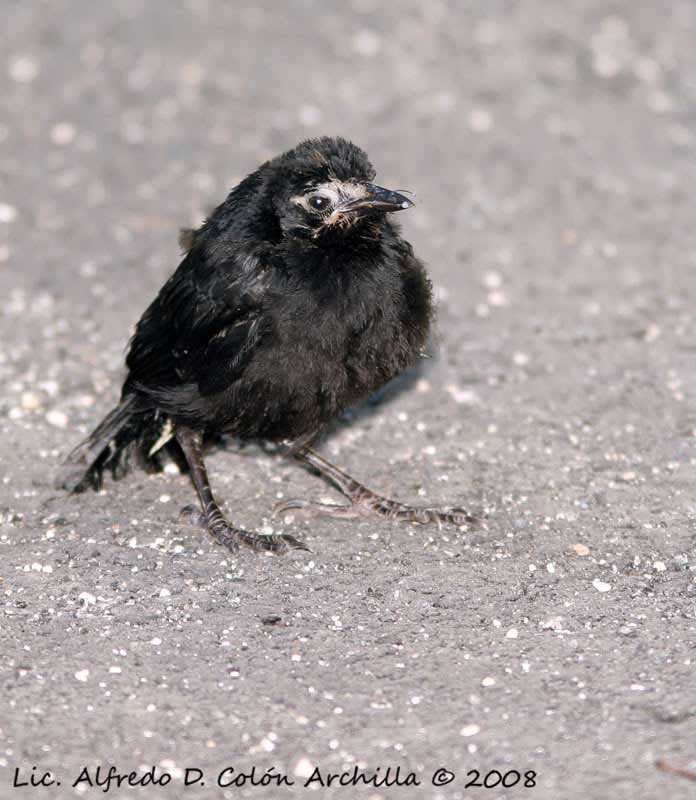
Juvenile resembles adults with shorter tail and brownish-black plumage without iridescence. Its eyes are dark.
Immature is similar to adults, but it lacks iridescence in plumage.
We find several subspecies:
Q.n. niger, the smallest race, breeds in Hispaniola and nearby islands.
Q.n. crassirostris is the Jamaican race with shorter bill.
Q.n. gundlachii is the eastern Cuban race. It is smaller than previous.
Q.n. caribaeus is the western Cuban race, smaller than « gundlachii ».
Q.n. bangsi from Little Caïman islands has long, stout bill.
Q.n. caymanensis lives on Grand Caïman Island.
Q.n. brachypterus from Puerto Rico and Vieques Island, is larger than the nominate race. Its bill shows decurved tip.
VOICE: SOUNDS BY XENO-CANTO
Greater Antillean Grackle has several local names coming from the varied sounds uttered by this bird. It is a noisy species.
It gives some “chak-chak” or “chin-chin-chi-lin”. It also utters ringing notes such as “whee-see-ee”. We can also hear a rasping sound, given with fluffed out plumage.
HABITAT:
Greater Antillean Grackle frequents the open areas with trees and the urban areas. It is often seen along water on beaches, lake-shores and other aquatic areas. It also frequents mangroves and marshes. It is very common in lowlands.
RANGE:
Greater Antillean Grackle is resident on the Greater Antilles and the Caiman Islands and nearby islands.
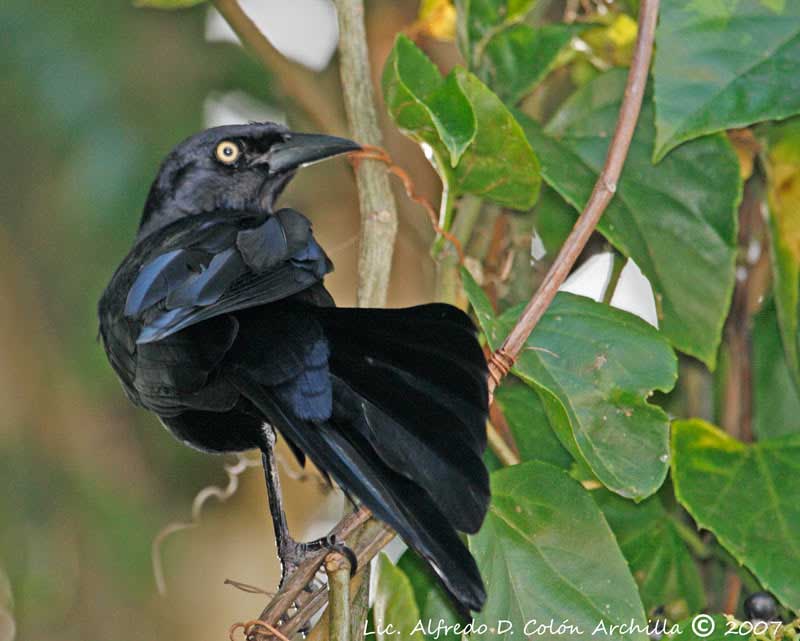
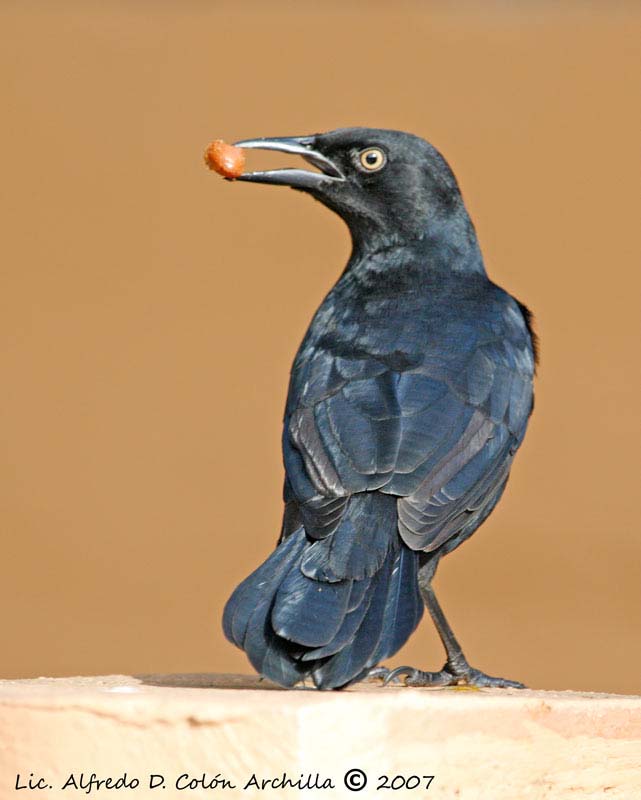
BEHAVIOUR:
Greater Antillean Grackle forages mainly on the ground, and sometimes on the cow’s back, searching for parasites. Its main food items are seeds and insects, sometimes small lizards, according to the range.
It forms large roosts where the birds gather at night with other Icterids’ species.
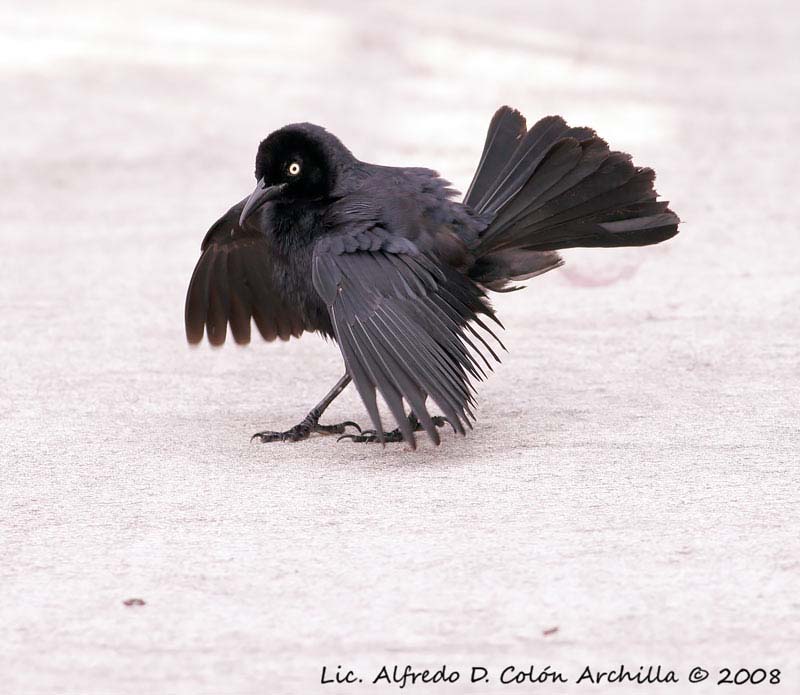
This species is monogamous. We can see conspicuous displays such as the “ruff-out”, with fluffed plumage and partially fanned and raised tail. The wings are drooped, almost touching the ground. While the birds sings, the head is thrown back with the bill pointed upwards.
The female also performs similar displays and sings.
Greater Antillean Grackle is sedentary in its range, only performing some local movements for particular food such as fruits.
FLIGHT:
Greater Antillean Grackle male often flies with spread tail.
REPRODUCTION:
Breeding season varies according to the island, but usually extends from April to September.
Greater Antillean Grackle nests in small colonies of up to 25 nests, usually situated in the same large tree or palm. According to the range, these colonies may occur in mangroves, but also in reeds.
The bulky nest is made with strong stems and grasses.
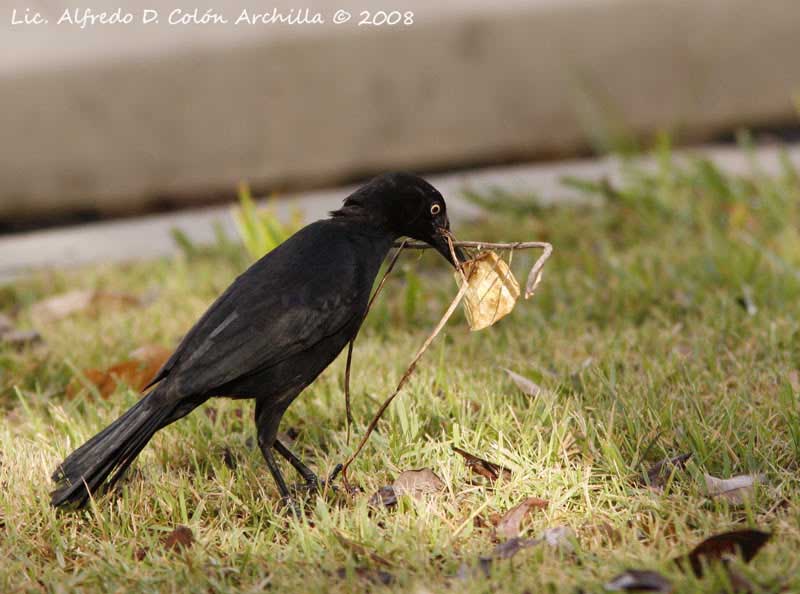
Female lays 3 to 5 pale eggs with dark markings. Incubation lasts about two weeks. The young fledge about 23 to 25 days after hatching.
This species is a host of the Shiny Cowbird in Puerto Rico, but it is not regular or common. The female Grackle is able to recognize the eggs of the cowbird, and she rejects them away from the nest.
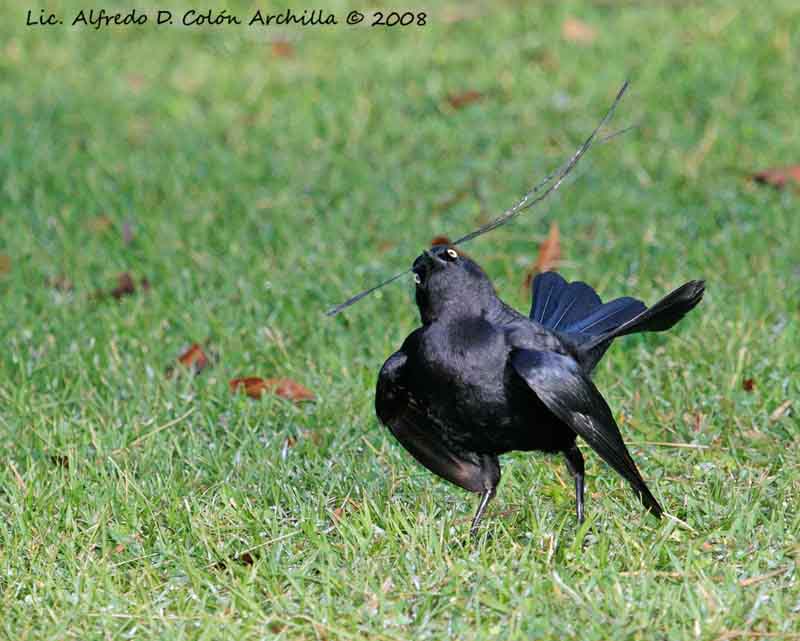
DIET:
Greater Antillean Grackle feeds mainly on insects and seeds, taken from the ground. According to the range, it may take small lizards. It also consumes fallen fruits.
PROTECTION/ THREATS / STATUS:
Greater Antillean Grackle is common in its range, and one of the most abundant lowland birds.
Fr: Quiscale noir
All: Antillengrackel
Esp: Zanate Antillano
Ital: Gracchio delle Antille
Nd: Antilliaanse Troepiaal
Photos d’Alfredo Colón
Puerto Rico Wildlife
Texte de Nicole Bouglouan
Sources:
NEW WORLD BLACKBIRDS – THE ICTERIDS by Alvaro Jaramillo and Peter Burke – Helm - ISBN : 0713643331
Wikipedia (Wikipedia, The Free Encyclopedia)